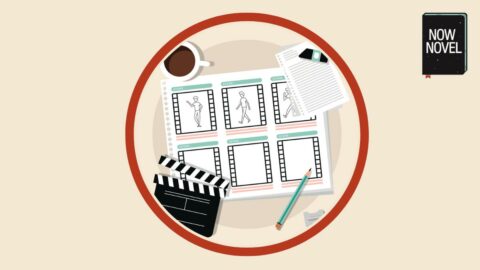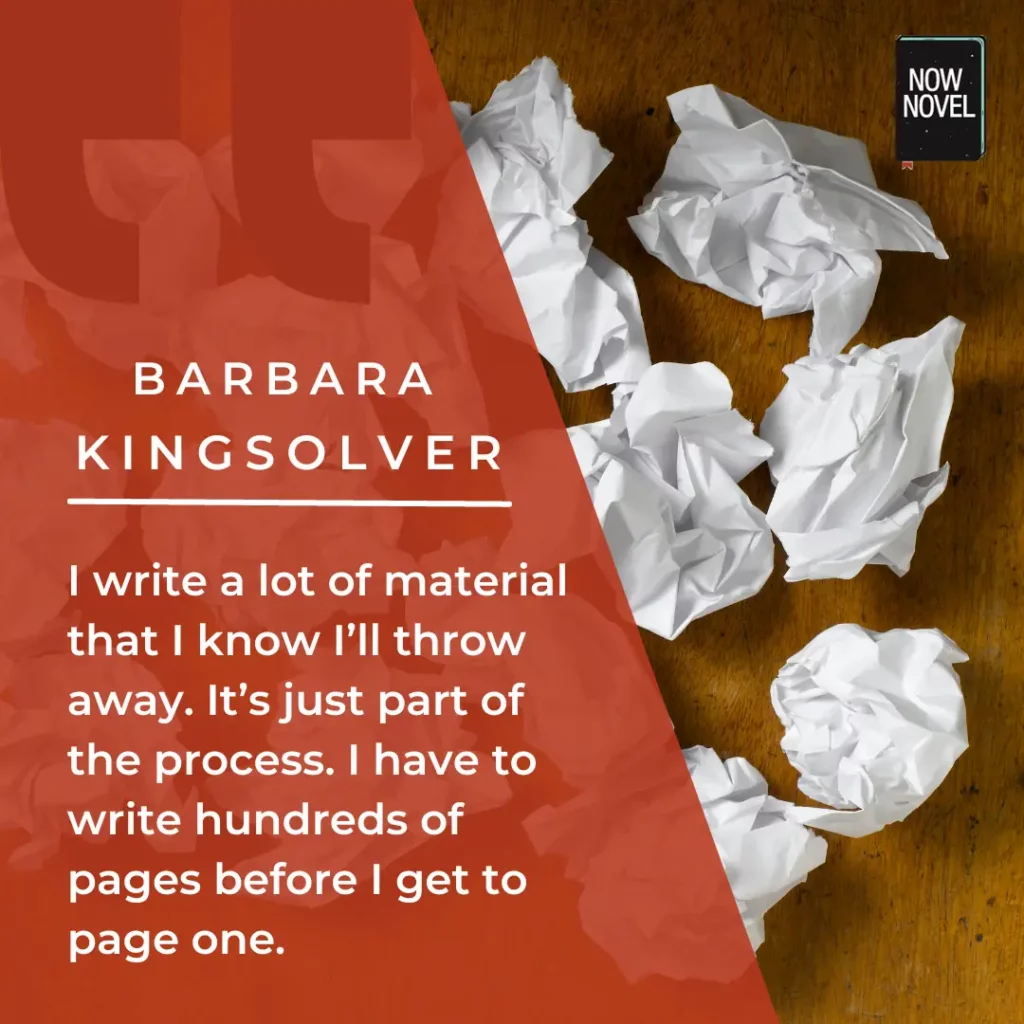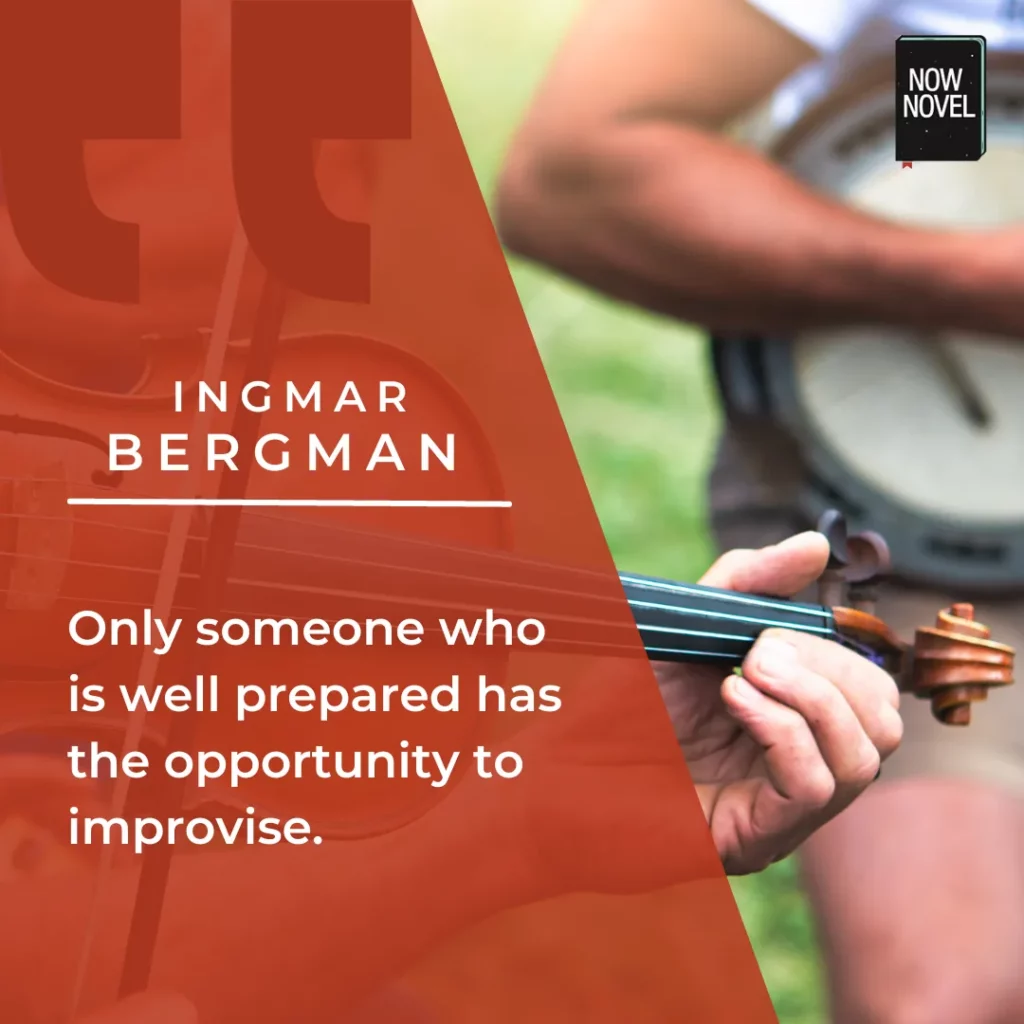The writing process has seven core stages: Discovery/idea-finding, prewriting, drafting, getting feedback, revision, editing and publishing. What is prewriting, the first stage? Read a simple guide including prewriting strategies plus tips to make a preparatory process work for you.
What is prewriting?
Prewriting is the preparation you make before you start drafting.
In a fiction-writing process, it means doing preparatory work that helps you keep in mind important aspects of your story such as:
- intended audience (for example, deciding genre or subgenre and thinking about your target readership’s age range)
- scope (for example length – whether you’re writing a short story, novella or novel)
- core subjects/topics and research (finding subject or topics you will need to research in order to tell this story)
It is the first stage of fiction and non-fiction writing alike. The typical seven-part writing process is:
- Discovery
- Prewriting
- Drafting
- Getting feedback
- Revision
- Editing
- Publishing
Prewriting is everything that comes before drafting – creating prologues, scenes, chapters; the narrative of your story.
Key prewriting strategies and tasks
Prewriting strategies that may help you put forethought into your stories include:
- Brainstorming: Putting down ideas quickly using prompts, mind maps or other strategies to find ideas
- Freewriting: Using free association in narrative form to write freely on a concept without structure or concern for story at this stage – for example, writing whatever comes to mind off a given word, image, scenario or idea
- Looping: Freewriting on a topic or idea, then choosing an idea from this process to do further freewriting (source: University of Kansas’ Writing Center)
- List-making: For example, answering a character profile questionnaire to list qualities characters in your story may have so you can differentiate them
- The journalist’s questions: Asking questions of ‘who’, ‘what’, ‘why’, ‘where’ and ‘when’ based off a scenario to brainstorm further creative ideas
Keep reading for tips on using the above strategies plus how to make the most of prewriting in your writing process:
Prewriting your story: How to use planning time well
Here are ideas on how to do prewriting to use story planning time well:
- Brainstorm central ideas (with audience in mind)
Find a central idea and ask who your target audience is (to build in marketability from the start).
- Use your idea to guide your research
Once you have your idea, list any research that would make it easier to tell this story. How will you approach it?
- Explore journalists’ questions (the 5 w’s)
Asking ‘who’, ‘what’, ‘why’, ‘where’ and ‘when’ questions directed to your central idea expands your concept.
- Simplify writing process using a story organizer
Story organizing tools and planning templates may simplify the writing process and bring extra clarity.
- Plan prewriting plus other stages
Plan not only research and outlining but other stages of the writing process (drafting especially), too. Deadlines and timelines for completion will keep you on track.
- Find the prewriting activity that suits you
Do you enjoy making lists or are you more of a visual planner and concept developer? Try different prewriting strategies to find your favorite.
- Try outlining alternatives if necessary
If outlining stifles the free flow of ideas, try a different approach such as writing a ‘draft zero’.
- Go back to prewriting methods if stuck
If you get stuck during the next phase of drafting, try reverting to a prewriting method such as freewriting to shake loose new ideas.
Let’s explore preparatory writing approaches further:
Brainstorm central ideas (with audience in mind)
A strong story concept or ‘central idea’ (as we call it in our story brainstorming process) is worth spending time on finding in the prewriting phase.
It’s much easier to draft (the next, developmental phase of the writing process) when you have an idea that hints towards possible conflicts, the impetus for an adventure (and its ultimate objective).
Why keep your audience in mind? Depending on your genre, reader expectations matter. In literary fiction, you might get away with a pastiche of genre tropes or something more experimental and sui generis (genre-less). Readers of genres such as thrillers, on the other hand, expect story elements such as twists and generally taut, well-paced stories.
It helps to brainstorm ideas when you know the publishing landscape for your genre, too. What’s been published recently?
Writing a book about sparkly vampires after Twilight or a fantasy series about a boy with a distinguishing scar could be a tough sell when the market is so saturated for these.
This is also why research is a crucial part of prewriting.

Use your idea to guide your research
Do you have your central idea? Fantastic – you have material to guide your research.
Is there something you need to learn more about to feel confident to move to the next stage of the writing process? Perhaps you need to research:
- A country you’re planning to use for a story setting
- A vocation or skill you don’t possess but a character does
- A psychological state or condition
- Life in a specific historical setting or era
Read over your central idea and make a list of possible reference sources.
For internet research, favor .edu, .org and .gov domains that have credible, cited references.
Many digital archives have been created that provide amazing scans of historical documents such as manuscripts and newspaper clippings, for example. The British Museum has digital collections, for example, offering information on over four million objects.
Strategies to organize your prewriting research
Apps such as Evernote and Trello offer ways to organize cards and lists with checklists and reminders.
Create bookmark folders in your internet browser by story location or other research detail if there are multiple topics you’ll need to learn more about.
Organized research where you can find the information you need fast will really help when you’re trying to find that one small fact you wanted to incorporate into your story.
Explore journalists’ questions (the 5 w’s)
Prewriting would be nothing without these five powerful questions:
- Who?
- What?
- Why?
- Where?
- When?
The 5 w’s (and how they change) are a fundamental ingredient of what makes a great story.
Let’s take an example: Using these questions to expand on a logline from a 2022 bestseller:
‘Two childhood friends follow in their fathers’ footsteps, which puts them on opposite sides of the law.’
This is the logline for John Grisham’s The Boys from Biloxi (October 2022).
Say you had this central idea – a useful prewriting activity would be to go through it asking yourself questions using the 5 w’s. Questions such as:
- Who were the boys’ fathers?
- What did their fathers do that put the boys on opposite sides of the law?
- Why did the boys decide to emulate their fathers’ behavior?
- Where did the boys grow up (and where are they when the story picks up with their adult life?)
- When is the decisive moment that the boys each fall on one or the other side of the law?
It’s easy to expand a central idea from two lines to a paragraph than a page through this simple questioning process.
Find process, tools and support to finish
Join The Process for regular critiques or become a Lifetime Now Novel member for story planning tools, live writing craft webinars and more
Learn More
Simplify writing process using a story organizer
A story organizer – whether it’s a whiteboard, corkboard with post-its (or the digital equivalent), prompt-based app or desktop writing software – is useful for prewriting with purpose.
Creating a skeleton of the tale you want to tell gives you something concrete to dress any way you like (not in a Norman Bates way).
A good outlining tool will help you with prewriting processes such as finding ideas, outlining, and moving around scene event outlines to find the sequence of events for your story.
Use the free template with progress tracker in our complete guide to story planning.
Plan prewriting plus other stages
It’s easy to get so caught up in outlining, research and other preparatory processes that you forget to apply any kind of organizing principles to drafting, the next phase of the writing process.
Drafting is hard, though. The prewriting phase is a good time to work out details such as:
- An attainable writing schedule for your story drafting
- A timeline from drafting to launch (including time for revision and editing)
Bank on a year at least (though Kickstart your Novel alumna Bonnie who we chatted to here managed to complete her debut within six months).
Tight timelines are doable with a plan plus discipline/accountability, so befriend prewriting sooner rather than later.
NaNoWriMo is useful annual event for pantsers resistant to planning because the timeline of 30 days and a clear target word count (50,000) provides an easy way to plan and prewrite.
It’s an ambitious daily word count target, though (50,000 / 30 or 1667 words per day). 80,000 words (standard paperback length) over six months equates to approximately 533 words per day – far more attainable if work or school keep you busy.
Find the prewriting activity that suits you
Writers often self-identify as either plotters or pantsers. Prewriting, though, isn’t only for plotting or finding in advance what will happen. If plotting each single incident in your story in advance isn’t for you, other prewriting activities you may still find useful include:
- Answering detailed character questionnaires to get to know your characters better
- Freewriting on a theme you intend to explore in your story (for example, ‘class in Victorian England’) to niche down and find more ideas
- Workshopping ideas in progress with other writers
Whatever prewriting activity you prefer, it should help you to write guided by a stronger underlying sense of purpose.
Try outlining alternatives if necessary
If you really don’t enjoy outlining or list-making, what then?
A very rough, not-at-all-polished first draft (or draft zero, or as a member called their draft in our recent Critiques Live ‘double zero draft’) provides a great way to take the pressure off yourself to write something perfect.
Try strategies for this type of prewriting such as turning your font white so you can’t be tempted to edit a few lines back as you go.
Another outlining alternative is to write a longer work as a short story, start to finish, first. This may uncover specific plot and character arcs that are begging to be teased into a longer narrative.
Go back to prewriting methods if stuck
What if you’re halfway through a draft you’ve ‘pantsed’ your way through (or planned) and you get stuck?
Many writers treat storytelling and drafting like a runaway train on a linear track. You lay down your own track as you go, though, and can backtrack to the shelter of a station – prewriting – at any time.
If you aren’t sure what to write in the middle, or have hit another type of roadblock, try one of these strategies from prewriting:
- Write a two-line summary of every scene in your story so far and go through the 5 w’s to brainstorm potential plot developments for each
- Choose a character, topic or scenario from your story so far, set a timer or 15 minutes, and write anything that comes into your head for 15 minutes
Maya Angelou famously said that when she got stuck, she would write inanities such as ‘the cat sat on the mat’ over and over until her creative mind got so bored she would write anything else but that.
What I try to do is write. I may write for two weeks ‘the cat sat on the mat, that is that, not a rat,’…. And it might be just the most boring and awful stuff. But I try. When I’m writing, I write. And then it’s as if the muse is convinced that I’m serious and says, ‘Okay. Okay. I’ll come.”
Maya Angelou, quoted by Jack Heffron in ‘Chapter 31: The Water’s Fine’ in The Writer’s Idea Book: How to develop great ideas for fiction, nonfiction, poetry and screenplays, 2012.
What is your go-to prewriting approach? Tell us in the comments.
Join The Process for weekly critiques from an editor plus story outlining tools, live writing webinars and workshops and more. All the tools and help you could need for prewriting, drafting and developing your story.

Pay $0 for weekly writing insights
Get writing tips and how to’s on story craft, extracts from live webinars with published authors, fun writing polls and more in our free weekly newsletter.



